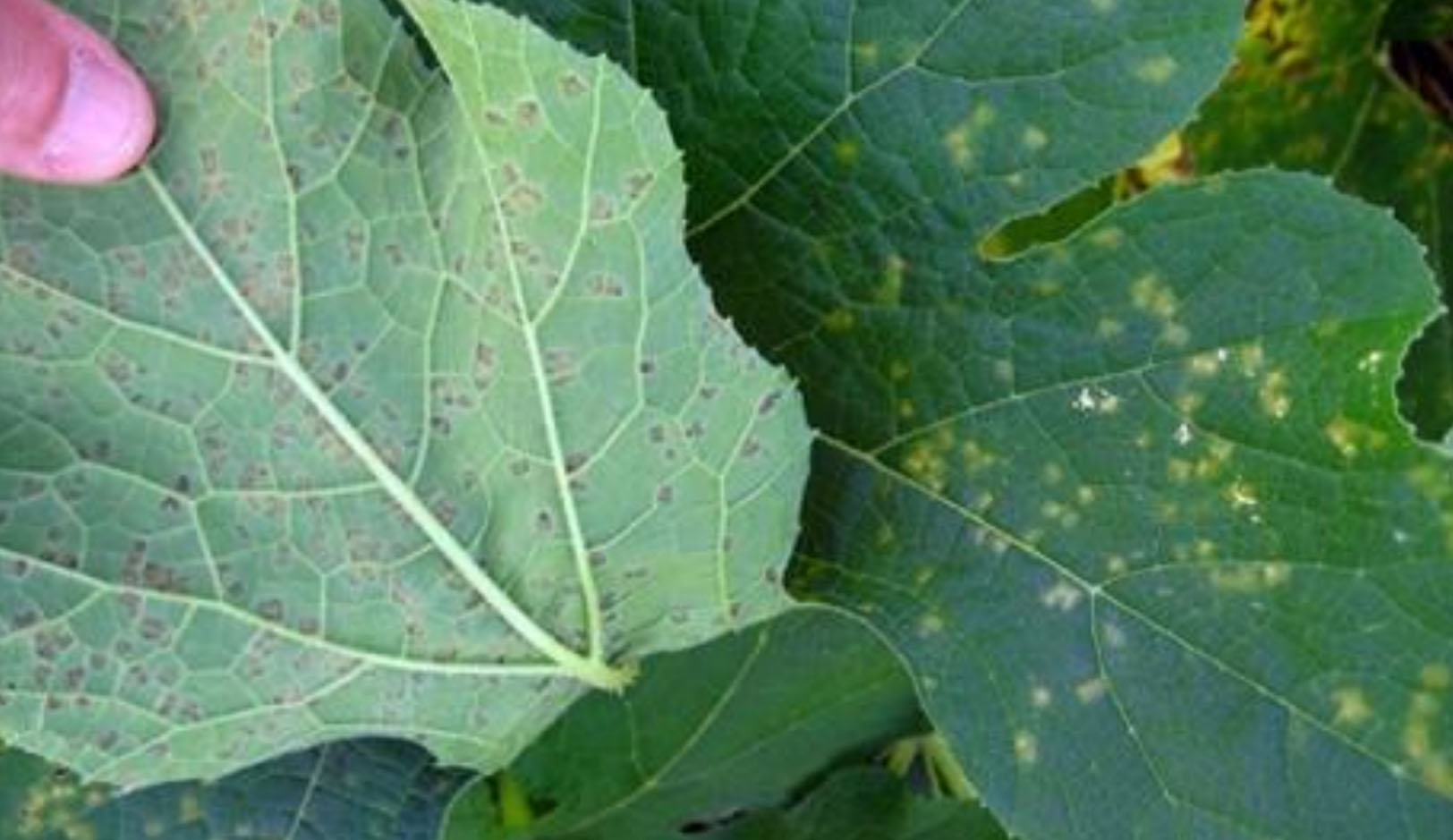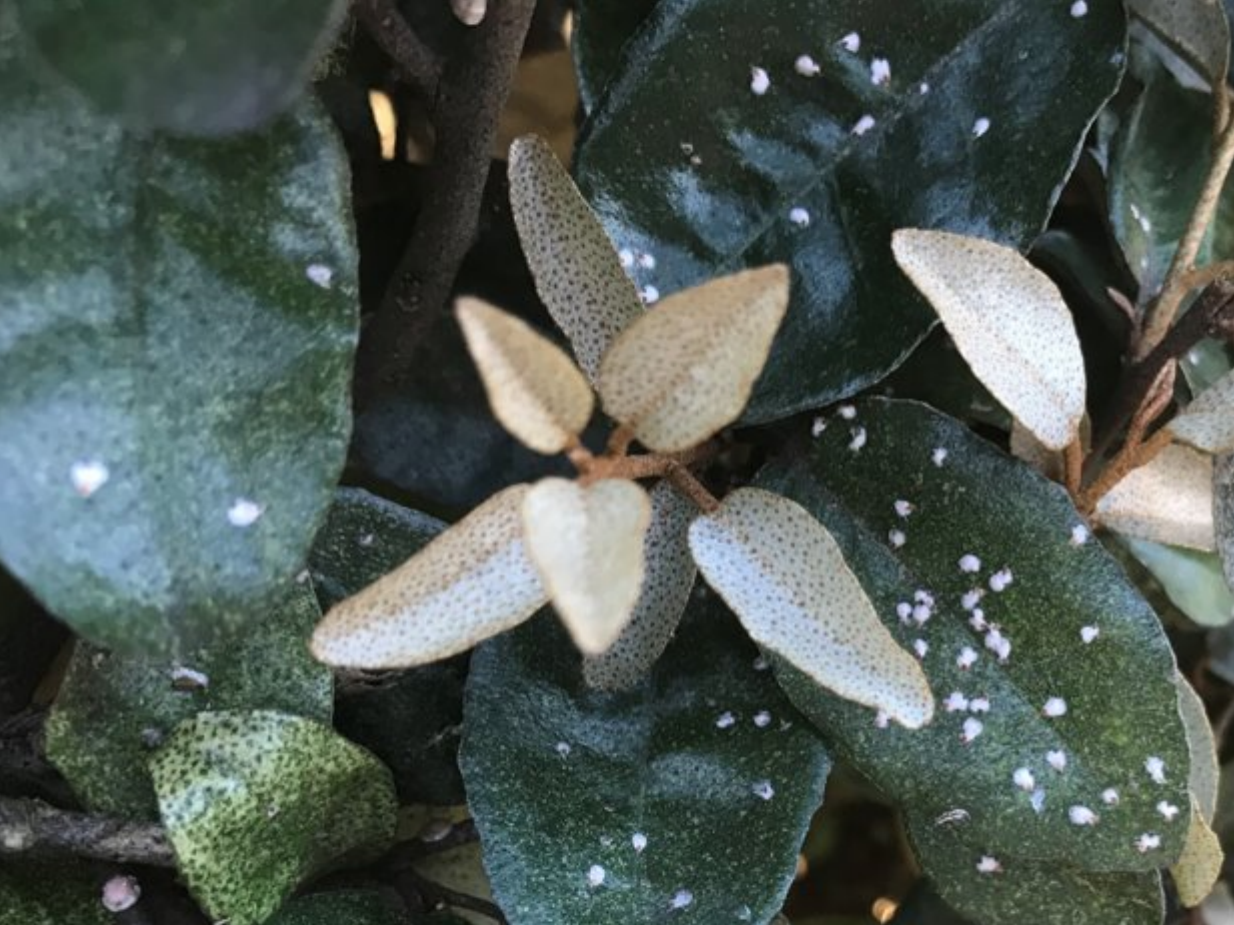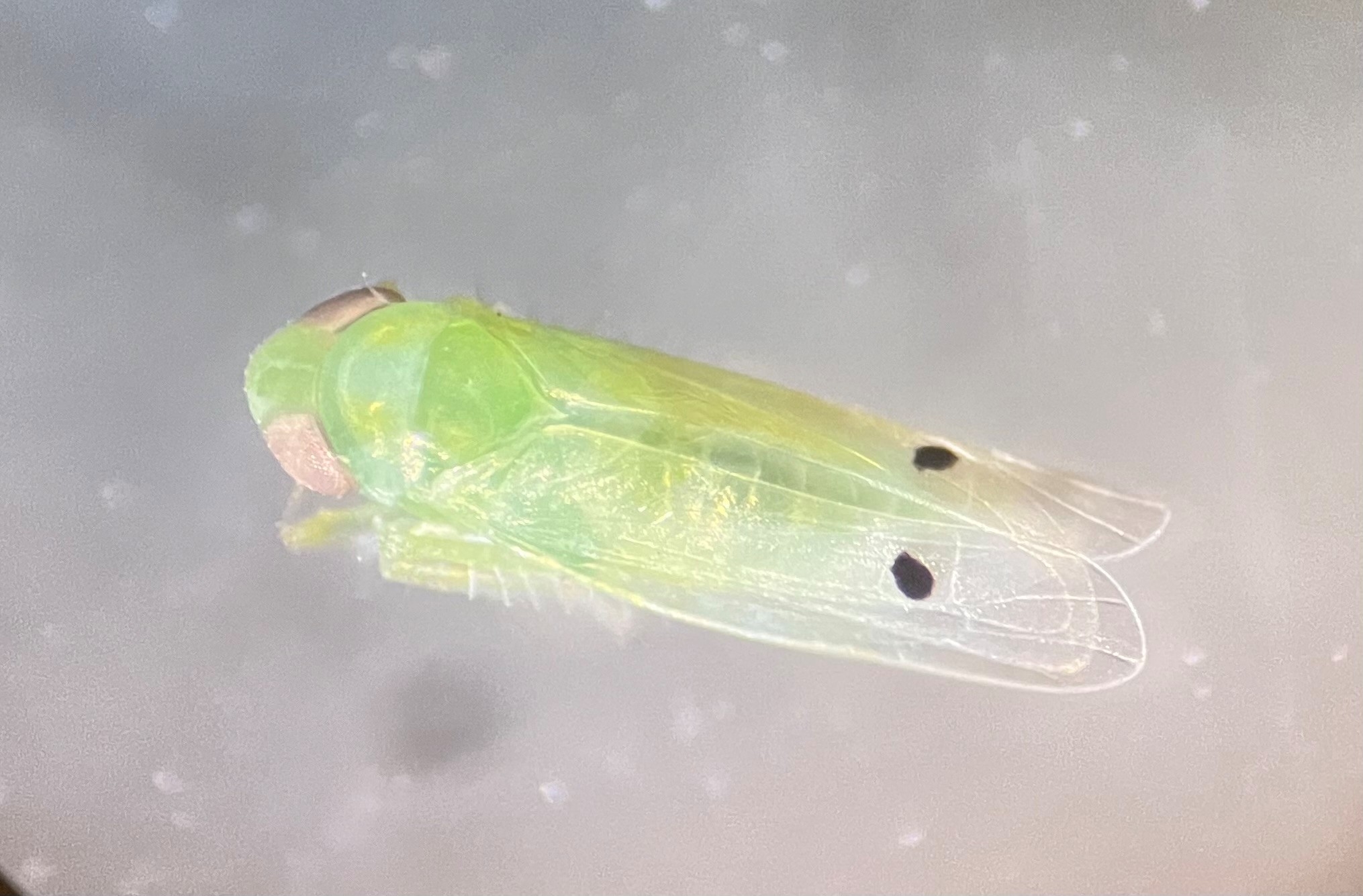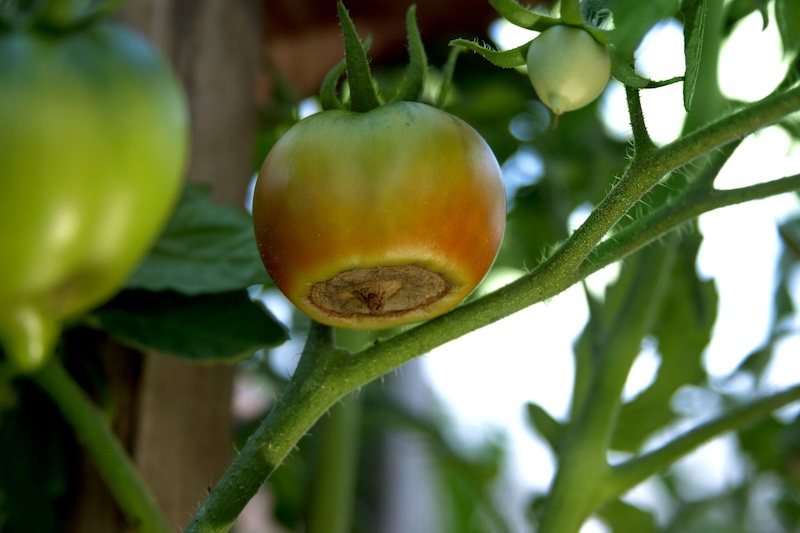The pecan leafroll mite, Aceria caryae (or Eriophyes caryae Keifer), is a noninsect pest of pecan trees belonging to the family Eriophyidae. Eriophyid mites are serious phytophagous (plant-feeding) mites that infest annual and perennial plants. They often go unnoticed because of their very small size, and they usually reside within plant tissues. In pecans grown in Georgia, damage from the pecan leafroll mite is typically observed from May through nut harvest.
Description and Biology
Adult mites are translucent white with cigar-shaped bodies that taper from head to tail (Figure 1). They measure about 0.1-0.2 mm in length, with visible rings on the abdomen. Unlike tetranychid mites, such as two-spotted spider mites, eriophyid mites have only two pairs of legs located in the anterior (close to the front) region of the body and possess a sucker on the ventral (“belly”) side of the posterior (tail) end that helps them attach to their host plants.
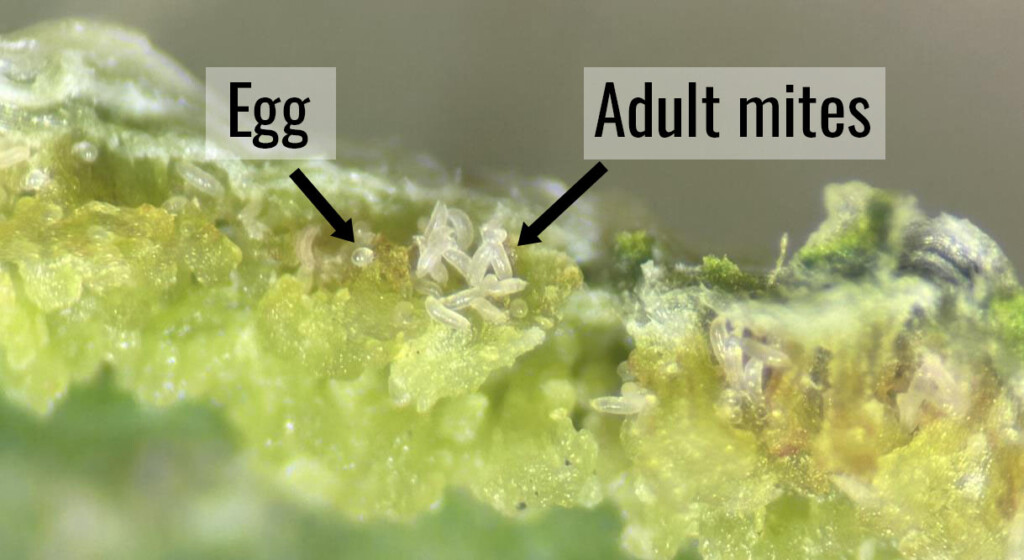
Since these mites are microscopic and mostly hidden under leaf tissues, it’s difficult to perform detailed biological or ecological studies of pecan leafroll mites. In general, mites go through four developmental stages: egg, larva, nymph, and adult. The entire life cycle is completed in 2–3 weeks, depending on environmental conditions.
Damage Caused by Pecan Leafroll Mites
In pecans, adult mites feed along the upper surface of the leaf margins of individual leaflets, causing slower cell growth compared to the lower leaf surface. This results in the formation of tight inward leaf rolls or folds on the lateral region (Figure 2). The mites reside within those folds.

Infested leaves occasionally turn brown, but defoliation does not occur, and the mites do not appear to cause significant harm to trees. However, severe infestations can cause leaves to become distorted and take on a needle-like appearance. Thus, overall leaf surface area is reduced (Figure 3), which could impact a tree’s ability to photosynthesize food and reduce nut yield.
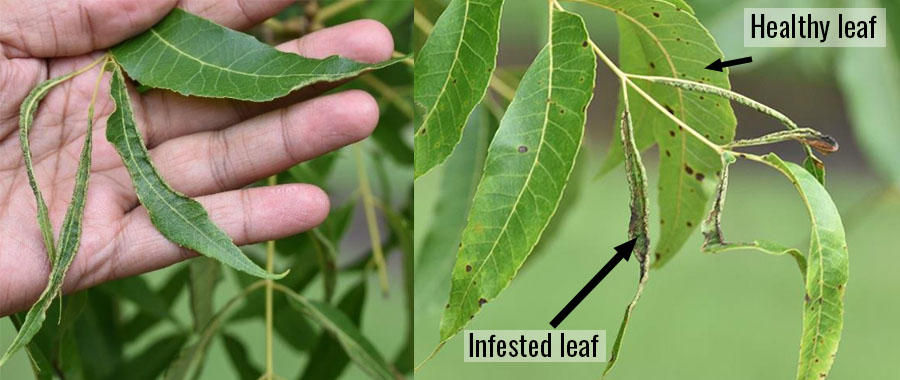
Host Plants
Damage from pecan leafroll mites can be seen in different species within the genus Carya, which includes pecans and hickories.
Management
This mite’s damage is not considered a serious problem on pecan trees, but it is often confused with symptoms of herbicide damage. During severe infestations, the leaf structure is affected and the overall leaf area is reduced, which could impact photosynthesis and nut yield.
Currently, pruning infested branches or removing damaged leaves is a common practice to reduce mite density in the orchard, although this practice can be impractical for growers, as many pecan trees are very large. In a natural setting, as the mites migrate from infested to uninfested leaves, they are exposed to various natural enemies in the pecan foliage.

Predatory mite species, such as phytoseiids and stigmaeids (Figure 4), the spider mite destroyer, Stethorus sp. (lady beetle; Figure 5), and predaceous midge larvae (Figure 6) actively feed on these eriophyid mites and help manage the mite population.
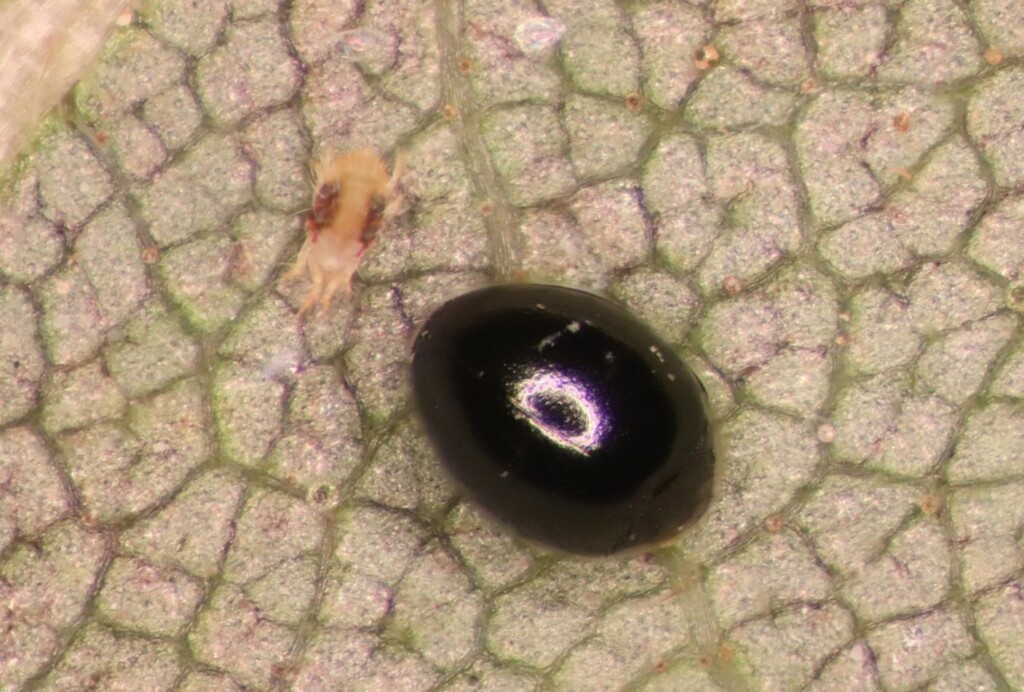
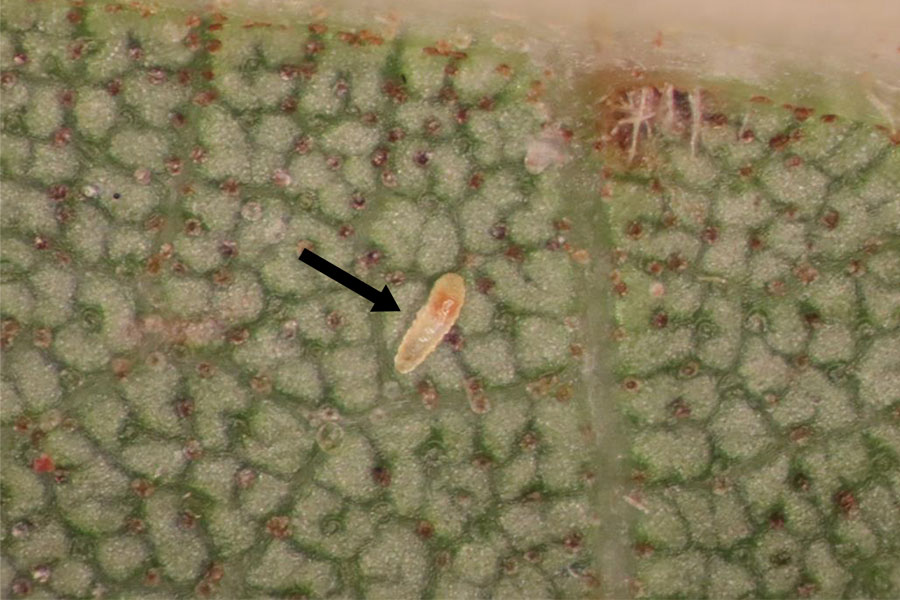
Given that the damage is not economically significant, chemical control is not recommended. Contact miticides generally do not work well because of inadequate coverage where these mites are hidden.
Additionally, promoting a healthy tree through proper fertilization, irrigation, and general care can make pecan trees more tolerant to mite infestations and other stresses. Thus, an integrated pest management (IPM) approach is best, as biological, cultural, and chemical control are combined for the sustainable management of pecan leafroll mites. Regular monitoring of mite populations and early detection are key to preventing severe infestations and ensuring effective management.
References
Davis, R. S., & Beddes, T. (2011). Eriophyid mites, bud, blister, gall, and rust mites (Paper 898). Utah State University. https://digitalcommons.usu.edu/extension_curall/898
Keifer, H. H. (1940). Eriophyid studies VIII. The Bulletin (Department of Agriculture, State of California), 29(1), 21–46.
Pisani, C., & Cottrell, T. E. (2024). Impact of pecan leafroll mite (Acari: Eriophyidae) on pecan foliage. Journal of Entomological Science, 59(1), 86–89. https://doi.org/10.18474/0749-8004-59.1.86
Ree, B., & Knutson, A. (1997). Field guide to the insects and mites associated with pecan. Texas A&M AgriLife Extension Service. https://hdl.handle.net/1969.1/87786
Wells, B. W. (1915). A Survey of the Zoocecidia on Species of Hicoria Caused by Parasites Belonging to the Eriophyidae and the Itonididae (Cecidomyiidae). The Ohio Journal of Science, 16, 37–57.



